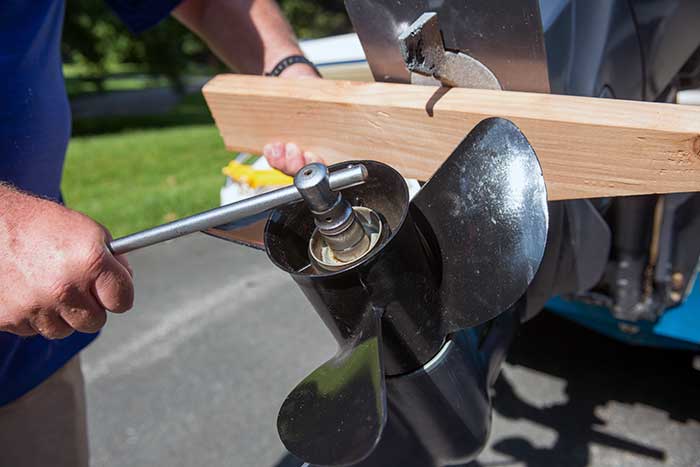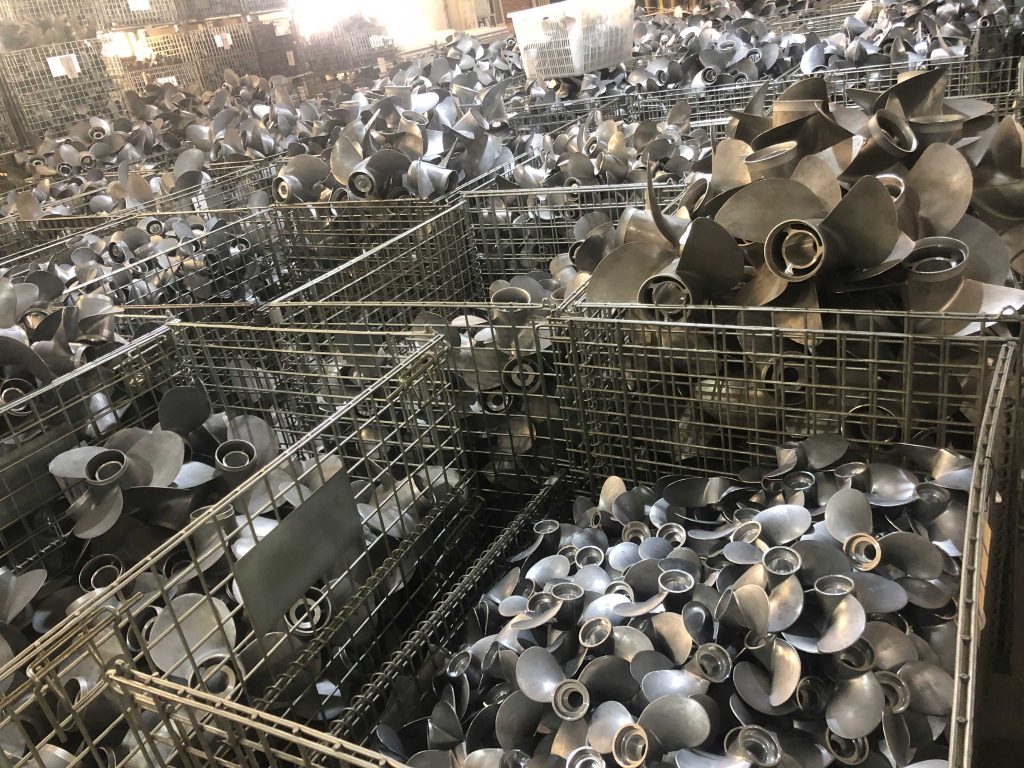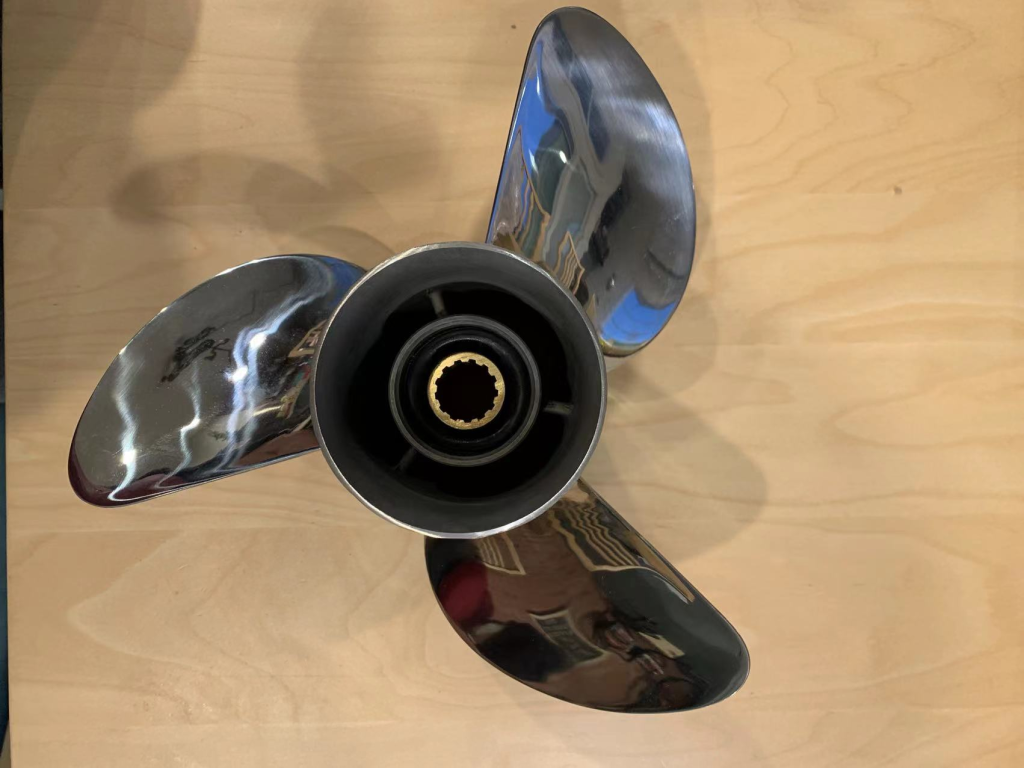To remove an inboard boat propeller, you will need a few tools and follow these steps:
- Ensure the boat is securely docked or on a trailer and the engine is turned off.
- Locate the propeller on the stern of the boat. It is attached to the propeller shaft.
- Remove the propeller nut or castle nut that holds the propeller in place. Use a wrench or socket to loosen and remove the nut. If there is a cotter pin securing the nut, remove it as well.
- Gently slide the propeller off the propeller shaft. It may require some wiggling or tapping to loosen it.
- Inspect the propeller shaft for any damage or wear. Clean any debris or corrosion from the shaft.
- If necessary, replace the propeller with a new one or have it serviced if damaged.
- When reassembling, ensure the propeller is aligned properly with the propeller shaft and slide it back onto the shaft.
- Reinstall the propeller nut or castle nut and tighten it securely. If applicable, insert a new cotter pin to secure the nut.
- Double-check that the propeller is securely fastened before using the boat.

If your propeller is damaged during disassembly, you can buy new stainless steel propellers and aluminum propellers at VIF.
If you want to know more detailed details, read on!
Step 1: Ensure the boat is securely docked or on a trailer and the engine is turned off.
Before beginning any work, safety should always be a priority. Make sure your boat is properly secured either at the dock or on a trailer to prevent any accidental movement. Turn off the engine to ensure there’s no risk of it starting while you’re working on the propeller.
Step 2: Locate the propeller on the stern of the boat.
The propeller is situated at the back of the boat, known as the stern. It is connected to the propeller shaft, which transmits power from the engine to the propeller blades.
Step 3: Remove the propeller nut or castle nut.
Using an appropriate wrench or socket, carefully loosen and remove the propeller nut. If the nut is secured with a cotter pin, remove the pin as well. This step might require a bit of effort, but be patient and avoid using excessive force to prevent damaging the nut or shaft.
Step 4: Gently slide the propeller off the propeller shaft.
After removing the nut, gently wiggle and slide the propeller off the propeller shaft. In some cases, a light tap with a soft mallet may be necessary to help loosen the propeller from the shaft.
Step 5: Inspect the propeller shaft for any damage or wear.
Take a close look at the propeller shaft for signs of damage, wear, or corrosion. Clean any debris or corrosion you find using a brush and a rust-removing solution if necessary. A clean and well-maintained propeller shaft will help ensure optimal performance.
Step 6: Replace the propeller if necessary.
If the propeller shows significant damage or wear, it’s a good idea to replace it with a new one. You can also opt to have the damaged propeller serviced by a professional if feasible.
Step 7: Align and slide the new propeller onto the shaft.
When installing a new propeller or reattaching the old one, make sure it’s properly aligned with the propeller shaft. Gently slide the propeller back onto the shaft, ensuring it fits snugly.
Step 8: Reinstall the propeller nut or castle nut and secure it.
Thread the propeller nut back onto the shaft and tighten it securely using the appropriate tool. If the nut uses a cotter pin for added security, insert a new cotter pin through the hole in the shaft to prevent the nut from loosening during use.
Step 9: Double-check the propeller’s security before using the boat.
Give the propeller a final check to ensure it’s securely fastened and there’s no play or wobbling. Start the engine and let it run briefly while observing the propeller to ensure everything is functioning as it should.
Conclusion about Remove An Inboard Boat Propeller
Removing an inboard boat propeller might seem like a complex task, but by following these nine steps, you can do it with confidence. Ensuring safety, proper alignment, and attention to detail will help maintain your boat’s performance and extend the life of your propeller. If you’re unsure or uncomfortable with any step, it’s always a good idea to consult a professional to ensure the job is done correctly.


